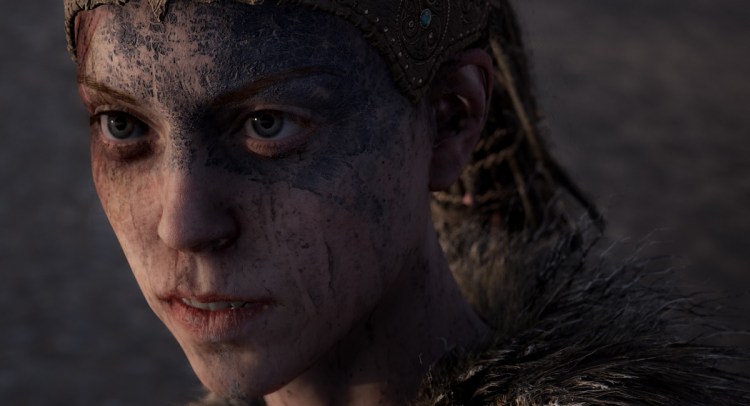We had another wonderful year of creativity and smash hits in the $116 billion game business in 2017. My favorite games of the year reflect that games are still my favorite entertainment medium, one that I spend more time with than any other. This list isn’t full of Oscar-like narratives, as if games really want to be like movies. They are a mix of game types: shooters, multiplayer melee fests, grand adventures, platformers, and strategy games.
My experience with Cuphead, where the internet blasted me for failing to play it properly, is a good reminder that I should spend as much time playing games as writing about them, as the expertise comes from both writing and playing. My list still focuses on the games that I enjoy, as opposed to the games that other people think I should play. I’ve completed campaigns for all of these except Cuphead and The Legend of Zelda: Breath of the Wild.
My list is full of games that were commercial successes, but it starts with an indie from Ninja Theory. I’ve considered games on all platforms, and I don’t have any virtual reality or mobile games on this list. I’m still playing Clash Royale, Pokémon Go, and Dawn of Titans on mobile, but those didn’t come out this year. As for VR, one of my kids would surely put Job Simulator from Owlchemy on the list.
For me, 2017 was a year of the triumph of PC and console games. Cross-platform titles are the bulk of the winners, but Microsoft-, Sony-, and Nintendo-exclusive games are represented on the list. I spent time with Star Wars: Battlefront II, Uncharted: The Lost Legacy, Mass Effect: Andromeda, The Last Day of June, Player Unknown’s Battlegrounds, Super Mario Odyssey, and Destiny 2. But those games fell short of making it on my list. It’s safe to say there were a ton of great games that came out this year, with many that I didn’t have time to play.
June 5th: The AI Audit in NYC
Join us next week in NYC to engage with top executive leaders, delving into strategies for auditing AI models to ensure fairness, optimal performance, and ethical compliance across diverse organizations. Secure your attendance for this exclusive invite-only event.
What remains are the games that struck me for their beauty, their gameplay, their wisdom, their stories, their characters, and their light moments that helped me escape from the real world, if only for a short time. Some of these games have huge open worlds, and I honestly I might have liked them better as straight-shot single-player stories. I don’t have time to play all the games I want to play, nor do you. But you might want to try some of these out, if only because you’ll enjoy the journey as well as the endings. Remember, it should be no shame at all that you don’t play these games with great skill or you can’t finish them.
For the sake of comparison, here are my favorites from 2016, 2015, 2014, 2013, 2012, and 2011. In each story below, the links go to our full reviews or major stories about the games. And be sure to check out the GamesBeat staff’s own votes for Game of the Year and the best individual favorites of the staff soon.
1) Hellblade: Senua’s Sacrifice
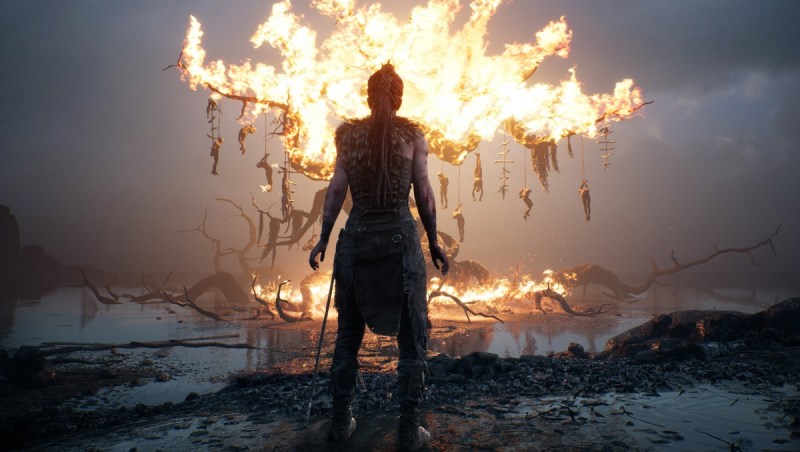
Above: Real or madness? It’s all too real for Senua in Hellblade.
Developer: Ninja Theory
Publisher: Ninja Theory
Platforms: PC, PlayStation 4
Hellblade captures the journey of its main character, Senua, into madness. The Celtic warrior struggles with inner demons as she goes on a quest to save her beloved from the mythical Norse underworld. It is a terrifying game, thanks in no small part to the screams of Melina Juergens, who played the role of Senua and won an acting award for her first-ever acting role.
That fine acting job contributed to the realism. The extremely detailed facial animations made this the first game for me that crossed the “uncanny valley,” which posits that the more realistic you try to make the face of an animated character, the more weird and artificial it seems. Senua’s face expresses raw emotion, even if she isn’t speaking.
I liked how everything came together in Hellblade to support the idea of getting the gamer to empathize with Senua in her psychosis, a mental illness condition where she sees things that other people can’t see. It didn’t just tell you a story like a “walking simulator.” It lets you walk in her shoes. Senua solves puzzles by looking a landscape from a different perspective. She is haunted by voices in her head and chooses to listen to her own inner voice. As Senua descends into the underworld and battles with monsters, you can’t really tell what’s real and what’s not. The dramatic tension is enormous, as the nearby sounds of creatures in the darkness are as terrifying as the scenes where you actually battle a demon in the darkness.
Four years in the making at an indie studio, the game was funded in part by biomedical research charity Wellcome Trust, which gave Ninja Theory a $395,000 grant to do research on mental illness. That was money well spent, and gamers are the beneficiaries.
2) Call of Duty: WWII
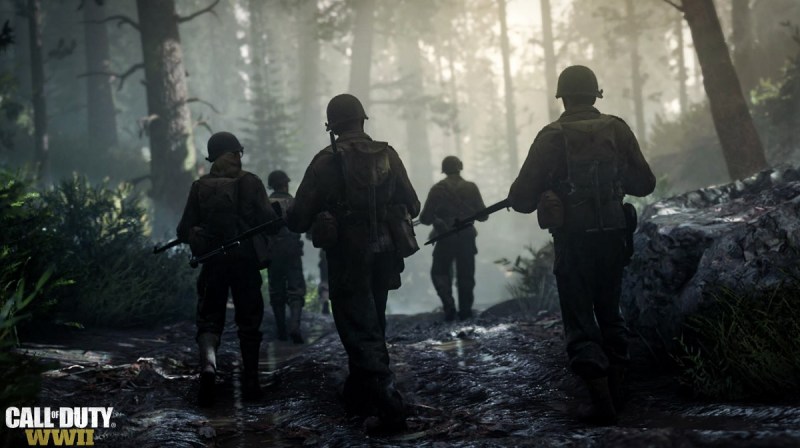
Above: You are part of a squad in the 1st Infantry Division in Call of Duty: WWII.
Developer: Sledgehammer Games
Publisher: Activision
Platforms: PC, PS4, Xbox One
The return to “boots on the ground” infantry combat was the right decision. By taking Call of Duty back to World War II, Sledgehammer helps us appreciate why this series became a $15 billion franchise. It puts you in the roles of individual infantry soldiers, the ordinary people who learn what it means to become a hero, without celebrating war or forgetting about all of its horrors.
The single-player campaign follows a squad in the Fighting First division of the American army, and it conveys what much of the war was like across so many different theaters of war and types of battles, from the landings at Omaha Beach to the infiltration missions of the French Resistance. The story shows that a hero is not a lone wolf, but somebody who does something for others, like a friend, a squad, or the larger cause of the war. And it shows you can redeem yourself, even after a moment of cowardice.
Multiplayer continues to hold my interest. I’m at level 47, with a kill-death ratio of 0.73, which means I get 73 kills for every 100 deaths. It’s not great, but it’s actually a lot better than I did last year at 0.40 with Call of Duty: Infinite Warfare. Multiplayer combat isn’t impossible anymore, and it has a hugely entertaining new War Mode, which is a story-based, multi-part battle between two sides.
I felt like Star Wars: Battlefront II’s appeal declined after the loot crate controversy, which is a shame because the game was good. And I also felt like its multiplayer wasn’t as sticky as Call of Duty’s. I thought that I would put Wolfenstein II in the second position earlier, but I decided to put Call of Duty ahead of it because I am enjoying multiplayer so much.
There is a disconnect between the honor and remembrance of the single-player campaign, and the esports nature of multiplayer. It kind of makes that idea that the game is about remembering the sacrifice of the Greatest Generation seem a little strange. But if this game is even a little bit as important as Saving Private Ryan or The Longest Day was for an earlier generation, well, I can go along with that mission.
3) Wolfenstein II: The New Colossus
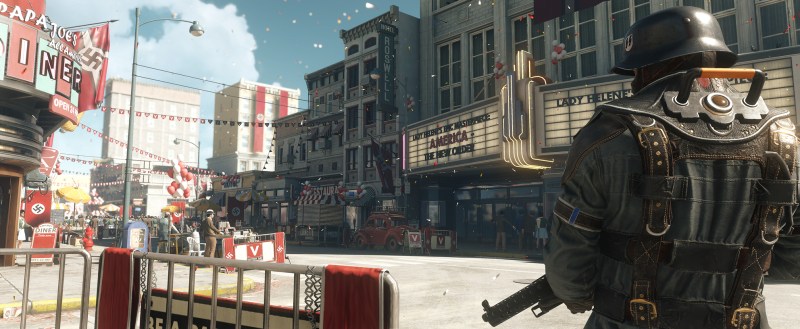
Above: Wolfenstein II: The New Colossus
Developer: Machine Games
Publisher: Bethesda
Platforms: PC, PS4, Xbox One
Wolfenstein II proved that a single-minded focus on developing a great single-player campaign is still a great strategy for a triple-A game studio. And this developer’s message about what would happen if the Nazis took over America is surprisingly relevant in American society in 2017.
The first game, Wolfenstein: The New Order, had you fighting as William “B.J.” Blazkowicz, who fell asleep like Rip van Winkle for 14 years, awaking to a Nazi world empire in 1960. With the sequel, you’re back to fighting Frau Irene Engel, the antagonist whose performance in the first game reminded me of a scene from Inglorious Basterds.
Wolfenstein has what Call of Duty: WWII and Battlefront II don’t have: a real villain that you can hate. It’s not enough just to have Nazis or, ahem, stormtroopers to eliminate. It keeps you engaged and immersed in the story of starting a new American Revolution to overthrow the Nazis. I loved the stark imagery of the Nazis in America, where Nazified culture and police state visuals abound.
The campaign has a 11 main missions that take a dozen or so hours to play, though it can take you longer if you play the bonus content or take a stealth approach. While the story and its 20-minute cutscenes are great, what really gets my motor running is the feel of the weaponry. As your enemies become more heavily armored and formidable, so do your own arms. You can melt Nazis in this game, and it feels good.
The story took a few interesting twists that made good points about how Nazi-like Americans could turn into sympathizers, and it brought a fitting ending in the final encounter with Frau Engel. It also had a touching angle with her daughter, who made the point that we shouldn’t vilify every person in the enemy camp.
4) Horizon Zero Dawn
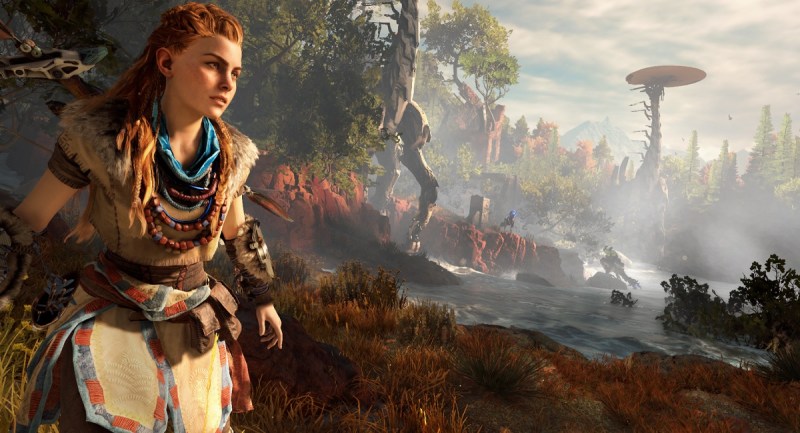
Above: Aloy lives in a beautiful open world in Horizon: Zero Dawn.
Developer: Guerrilla Games
Publisher: Sony
Platform: PS4
I spent a lot of time in the vast world of Horizon Zero Dawn, which took seven years to make. When I finished the main story of the single-player campaign, I realized that I was only 32 percent done with the content. By contrast, when I finished Red Dead Redemption years ago, I was 70 percent done with the content. This is so huge that you could go back to it and be surprised at what you passed by.
What made this game delightful is that it was a huge investment in a new world. You play as female warrior Aloy, trying to unearth the mysteries about why mechanical dinosaurs are roaming the planet and humans are almost extinct. Much of the time, Aloy has to slink about and run from giant beasts. But my favorite battle was one where I fired a portable mortar at a horde of attacking creatures.
The story is riveting one where Aloy is in search of answers about her own identity and how that is intertwined with the fate of the world. Unlike other postapocalyptic games, the world is lush and full of life, as the Earth has regrown itself in the wake of humanity’s near extinction. You can stop and challenge herds of dinosaur-like creatures at any time, but if you don’t have the right weaponry or tactics or traps, you’ll die. It also has an intriguing frenemy who is with you most of the way, and that character plays a very interesting role in the finale.
Great world. Great character. Great story. And great gameplay. I agree with our reviews editor, Mike Minotti, that this is the start of a great new franchise for Sony and Guerrilla Games.
5) What Remains of Edith Finch

Developer: Giant Sparrow
Publisher: Annapurna Interactive
Platforms: PC, PS 4, Xbox One
Giant Sparrow‘s Ian Dallas has shown that he has a great creative spirit, first with The Unfinished Swan, which was my favorite game of 2012. And now with Edith Finch, his team has created a bizarre but wonderfully creative tale about the accursed Finch family. It is a light horror game, with disturbing thoughts about what life was like for the various Finch family members in their last moments before death.
You spend your time as Edith Finch, going through the old home that has been built up like the Winchester Mystery House, with one addition after another. The various bedrooms are locked until Edith finds a way in, and within the rooms she finds the stories of the deceased. I was particularly struck by the combination of gameplay controls with the music and story of Lewis’ death in a fish cannery. I also loved the story about Barbara, who disappears into the pages of a horror comic book. The game alternates between these sad tales of the last moments of someone’s life with the Gone Home-style exploration of the vast Finch home.
I can’t say I’m a fan of the ending, but the lack of a clear explanation to the mystery made me think more about the collection of stories along the way. In fact, Dallas hinted a while ago that he knew that he didn’t want to create an ending until late in the development. But Giant Sparrow did succeed in creating an experience in a video game that I’ve never had before.
6) Middle-earth: Shadow of War

Above: The GamesBeat team fights about who is the biggest Shadow of War fan.
Developer: Monolith Productions
Publisher: Warner Bros. Interactive Entertainment
Platforms: PC, PS4, Xbox One
I’m a big fan of J.R.R. Tolkien’s The Lord of the Rings, which really was the first open world, only in book form rather than virtual. The story takes place in the 60 years between the events of J.R.R. Tolkien’s The Hobbit and The Lord of the Rings. Monolith followed up its excellent Middle-earth: Shadow of Mordor from 2014 with a sequel that continues the brilliant story of a Ranger of Gondor, Talion, who is brought back from the dead by the wraith (ghost) of Celebrimbor, a great elven smith whom Sauron deceived into entrapping the world of Middle-earth through the Rings of Power.
Celebrimbor wants his revenge, and Talion is his vessel. In the first game, Talion uses his powers to start a civil war among the Orcs in an attempt to take the throne from the Dark Lord. In the sequel, the war is under way, and Talion has to take the fortresses of Mordor away from the Sauron and his Ringwraiths. This story is perhaps the first new piece of fiction in the Tolkien universe that I think should be part of the Tolkien canon.
Against that backdrop is the campaign, which consists of 63 millions, and its Nemesis system, which enables enemies that you kill or maim to remember you and come back with a desire for revenge. I enjoyed fighting and refighting the orc captains, and I thought the siege battles for the control of cities were particularly well done. The open world left me occasionally confused about where to go next, but that could have been fixed with just a better user interface and cinematic strategy.
War is controversial because the true ending of the game takes place after about 20 hours of grinding that happens after you finish the main campaign. Some players thought that meant you had to buy loot crates to get through the grind, but I found that wasn’t the case. But I have to say the true ending is a vast disappointment, as I was hoping for another outcome. Still, I applaud Monolith’s effort and its sticking to theme of what it means to bring someone back from the dead.
7) Cuphead

Above: Success!
Developer: Studio MDHR
Publisher: Microsoft
Platforms: PC, Xbox One
I’ve had a hard time getting hassled by haters who thought I was too inept to play games of skill like Cuphead. I’ve given it a try, and it humbled me. It is a unique game, with 1930s cartoon art, imaginative characters, and crazy music that make you feel like you’re in the middle of a spectacle.
To play it requires a mastery of moment-to-moment interactions with a controller. You have to jump at the right time and hit another button to perform timed actions that will keep you alive. Like you have to jump and dash at the right moment to escape a falling nut as you leap across a chasm. To me, this kind of gameplay takes more skill than the moment-to-moment battles in Call of Duty: WWII multiplayer combat, where I am clearly a lot more comfortable.
Studio MDHR addressed the difficulty with a Simple mode, but it doesn’t permit you to get to the final boss. Still, the journey is what I enjoyed. It makes you feel nostalgic for the good ol’ days of platformer games. It is far easier to play if you go into the battles in co-op mode, where you can rescue a friend who is stricken and then keep playing.
Cuphead is not a complete success, which is why it isn’t on the top of my list. It is, in fact, too hard, as demonstrated by the fact that the vast majority of people who bought it have not finished it. But that’s OK, as it was designed that way by Chad and Jared Moldenhauer, who mortgaged their homes to bring their vision to market. If you go into it knowing that, despite its kid-friendly cartoon style, it is a really difficult game, then you have a moment of elation when you beat a particular level. While I may never finish this game due to my lack of skill and patience, I appreciate what it has accomplished.
8) The Legend of Zelda: Breath of the Wild
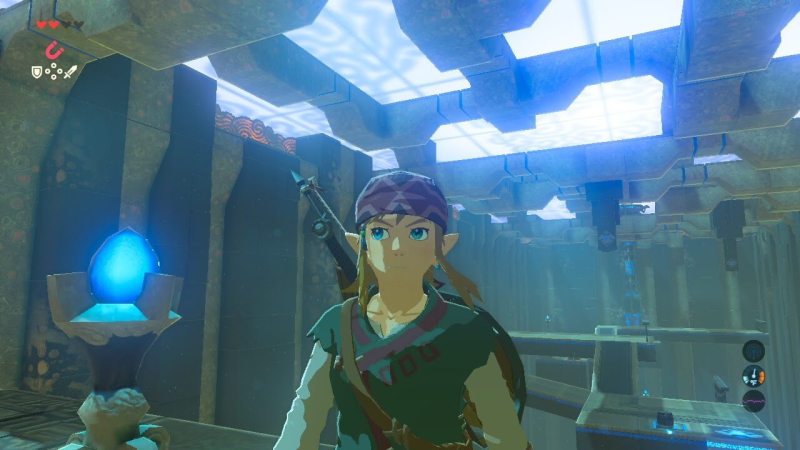
Above: The Legend of Zelda: Breath of the Wild
Developer: Nintendo EPD
Publisher: Nintendo
Platforms: Nintendo Switch
The open world of Hyrule is vast. Sometimes, that makes me groan because I don’t have the time to finish multiple open world games that all come out at the same time. This year, I bounced between Mass Effect: Andromeda and The Legend of Zelda: Breath of the Wild. I chose to finish Andromeda, which is much shorter, but I regret that decision. And now I find that Zelda is the game that I really should have spent my time in.
Zelda has this beautiful anime style for its art, and it looks so much better in the world with vast draw distances where you can see forever. It is immersive and believable, as you can wander in the world and run into surprise enemies and characters who will tell you stories along the way or make your quests easier. Whatever you do in the world is fun. That can be simple, like going fishing by dropping a bomb in the water, or climbing up a mountain before you become too weary. Taming a horse is fun. Cooking food with different ingredients is fun.
I managed to get stuck in one of the shrines where I was supposed to open a big set of doors that just wouldn’t budge. That held me back from finishing, even though I could have easily skipped it. I also had issues with the map, which seems ridiculously half-baked for such a vast game space. I think I’ll be forever wandering as I figure out how to get back on the main path in Zelda. I would love to finish this game one day, but that would take a focus that I don’t have, as well as time dedicated to getting through my pile of shame. I’m so easily distracted by things in the world. And I guess I am OK with that.
9) Prey
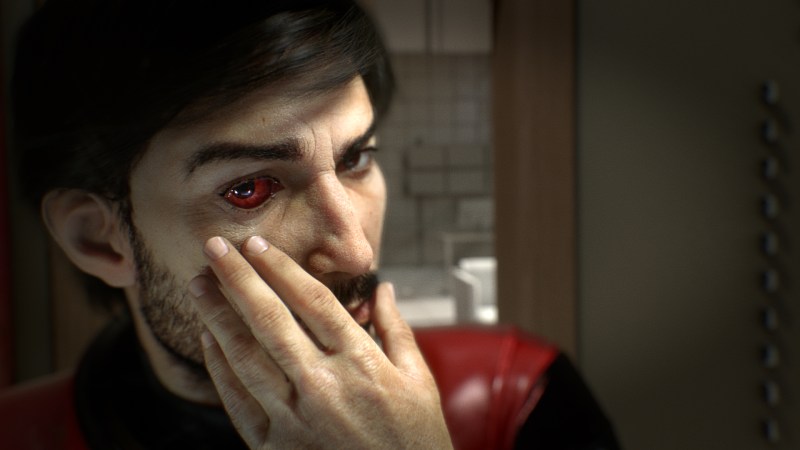
Above: Everyone’s body goes through changes, but it might be a little scarier in the new, revived Prey.
Developer: Arkane Studios
Publisher: Bethesda
Platforms: PC, PS4, Xbox One
This shooter came out in the spring and it was a very different kind of game. I really wanted to hate it, because I thought the enemy creatures looked ridiculous, almost like black smudges. But I stuck with it in part because of the way this game was designed. The enemies, an amorphous alien species dubbed the Typhon, could appear anywhere in the giant space station, and they could take the shape of ordinary objects. While you have specific missions that you have to finish in order to stay on the main track, you have to take a lot of side missions in order to become powerful enough to survive later on.
Prey held my attention in part because I was able to set up the drama myself. I appreciated the customizable Asian American main character. When I came into contact with the nightmare bosses, I could set up a small fortress with a lot of ammo and explosives that could weaken the bosses enough for me to kill them as I tried to retreat. That was emergent gameplay at its best.
It was like an addiction, where I loved it and hated it at the same time. I hated it because I was always short on ammo, but that shortage forced me to check out vast portions of the open world. In fact, I cared more about finding ammo or crafting it from parts than I did about finishing quests. And really. Could they have just given me a shotgun at the beginning? Still, I appreciated the feeling of paranoia that Prey created, from the very beginning when I found out my character wasn’t who I thought it was, to the notion that every piece of furniture could be hiding an enemy that was out to kill me.
10) Total War: Warhammer II
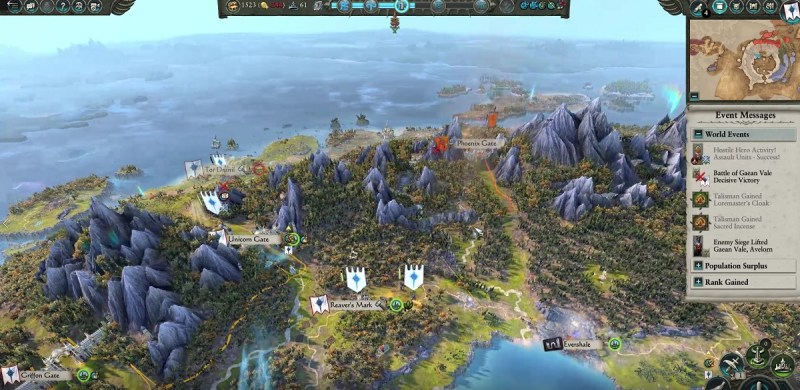
Above: Total War: Warhammer II has beautiful strategic map graphics.
Developer: Creative Assembly
Publisher: Sega
Platforms: PC
In 15 years of playing Total War games from The Creative Assembly, I never hungered for them to leave history behind and make a game based on the fictional Warhammer universe. But that’s what they did, and it turned out good. With Total War: Warhammer II, they got the balance right. The game has a beautiful strategic map where you can maneuver multiple armies against the forces of Chaos, and you can drill down into tactical battles in the places where two armies come together.
The developers came up with a campaign game that pits four Warhammer factions against each other in a race for a single-minded task: Conducting five rituals to gain control of the Great Vortex, a magical maelstrom at the center of the strategic map. This was something I could understand, and I learned that gathering dragons in my army was going to be a big help. That made the burden of learning the Warhammer lore fairly light.
It has colorful terrain on its strategic maps, which you can view in 3D from any angle. And you can also dive into a given battle scene and fight a battle in full 3D. You can zoom in on a single soldier, or zoom out to see the panoramic battlefield. You can get both the rat’s eye view and the dragon’s eye view. Thousands of soldiers can fight in each battle, and the sound design is awesome as well with creaking catapults and ambient battle cries.
The fun thing about Total War is that you can never really predict which way a battle is going to go, particularly when you have thousands of soldiers whose courage can turn the tide or fail at any given moment. The design of this game underscored that particular fact. The game gets a bit repetitious. It didn’t hold my attention for as long as Total War: Attila, and other historical games. But it was very well executed.
Honorable mentions: Star Wars: Battlefront II, Destiny 2, Uncharted: The Lost Legacy, Super Mario Odyssey, Gorogoa, PlayerUnknown’s Battlegrounds, and Food Truck Chef. And my likely favorite game that was delayed until 2018: Red Dead Redemption 2.
